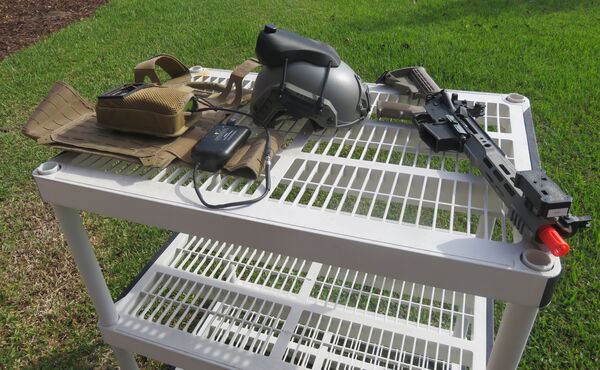
The components of Lockheed Martin's SIMRES geo-pairing system include a player unit, a helmet sensor, and a weapon sensor mounted on the barrel of an Airsoft weapon that was being used for demonstration purposes. (Giles Ebbutt)
In response to the US Army's search for an alternative to its existing laser-based line-of-sight (LOS) tactical engagement simulation system (TESS), Lockheed Martin has developed a geo-pairing system that reflects the true ballistics and effect of terrain and demonstrated this during the Interservice/Industry Training, Simulation and Education Conference (I/ITSEC) 2023 in Orlando in November.
The SIMRES system utilises sensors mounted on the soldier's helmet and individual weapon to track their position in the real world and translate these to a virtual environment using a detailed scan of the training area terrain. All participants in an exercise are tracked in the same way. During an engagement, the sensors detect when a weapon is fired and the trajectory of the round. The system assesses the point of impact and outcome of the engagement depending on the weapon and ammunition type.
This overcomes the perceived disadvantage of a laser-based system as it distinguishes cover from fire, such as a brick wall that provides protection, and cover from view, such as a bush that offers little protection. It also enables non-LOS indirect fire weapons such as the M320 grenade launcher to be utilised realistically in force-on-force training.
The engagement can be viewed and replayed in the virtual environment for after-action review. Dan Hyatt, Lockheed Martin chief engineer, land and maritime training, said the company had recently partnered with Epic Games and was now using its Unreal Engine as the visualisation system.
Looking to read the full article?
Gain unlimited access to Janes news and more...







